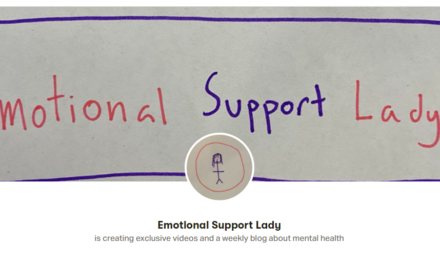The road to content entrepreneurship success and longevity includes the diversification of revenue streams. Increasingly, content creators add online courses to their lineup to share their expertise, build their community, and establish online course pricing so they can make some bank.
Online courses and workshops are the top moneymaker for creators, according to The Tilt’s inaugural content entrepreneur benchmark research. And demand from consumers across the globe for virtual learning is skyrocketing, according to Closing the Gap: 2022 Online Learning Trends from Thinkific, an online learning platform. More than 38,000 creators who responded to Thinkific’s survey have students on multiple continents.
Online courses and workshops are the top moneymaker for creators, according to a survey of #ContentEntrepreneurs from @TheTiltNews. Share on XBut building an online course empire takes some forethought as you decide if your fans are hot for learning and what your teaching tilt will actually be. Then, as you assemble the online course, you confront another tough question: How can you make money from it?
The beauty of online teaching, says Henk Campher, Thinkific’s chief marketing officer, is the flexibility of pricing structures. “It all depends on the kind of knowledge and audience that you build and then how your business is growing,” Henk says. “The beauty of this is you can scale it your way.”
Pricing strategies for online courses are flexible. Price often depends on the knowledge you're sharing and the audience you're building, says Henk Campher of @Thinkific. #ContentBusiness Share on XHere are six online course pricing strategies to consider as you make moves toward making money with your offerings:
1. Look to the market
Online course creators catering to established business leaders might be pricing a single course at thousands of dollars. But creators with a tilt in knitting for newbies probably need to start pricing at a much lower point.
The average price for an online business and marketing course was $234, according to Thinkific’s report. Meanwhile, it was $129 for arts and entertainment classes, $169 for personal development, and $175 for health and fitness.
Average price for online business course is $234 and $129 for arts and entertainment classes via @Thinkific research. #ContentEntrepreneur Share on XAs you consider your pricing, do your research, says Jimmy Huynh, marketing training programs manager for Kajabi, an online learning platform. Consider who your customers are and look at what potential competitors charge for similar content.
“You don’t want to outprice yourself, and you don’t want to be below other competitors,” Jimmy says. If your courses are much cheaper than others in the market, potential customers might doubt if you really know what you’re talking about. A low price also means you have to get many more customers to simply break even.
If you price courses cheaper than others in the market, potential customers might doubt if you really know what you're talking about, says Jimmy Huynh of @Kajabi. #CreatorEconomy Share on XBeing mindful of her market has been a key strategy for content entrepreneur Christina Rozema, founder of New Wellness Perspective.
Christina, who recovered from a heart attack induced by a high-stress health-care career, offers courses aimed at helping female health-care leaders live healthier. Her courses start at $37 for a boot camp designed to just get students in the door and thinking about the stress levels in their lives.
“For my group, it’s not a lot, and that’s the point,” she says. “I just really want them to get into it and stop telling themselves everything’s fine because it’s so not fine. It’s priced to the point where it’s a no-brainer to get in.”
Christina Rozema (@virtu1473) prices her online wellness boot camp course at $37 to get students in the door. #ContentEntrepreneur #CreatorEconomy Share on X2. Presell your courses
When launching anything new, it can be hard to gauge interest. There’s uncertainty about how many people will sign up. And, frankly, you may need a little cash to create the nuts and bolts behind the course itself. That’s why preselling is a popular option for content creators.
Some 34% of top creators use pre-order waitlists to sell their courses, according to Thinkific’s survey. With this strategy, your fans pay now to access the course when it’s live. They get the opportunity to lock in their virtual seats early, and you’ll have the money – and incentive – to get it done. (Just make sure, of course, you make good on your promise.)
It’s the strategy for Monique Melton of Shine Bright School, who teaches on Black liberation and anti-racism topics.
“My advice for folks would be: Warm up your audience about the topic, talk to them about it, the benefits of the topic, let them know something is coming, ask questions, and directly DM them and ask them to tell [you] what their thoughts are,” she says.
Preselling builds excitement around the course – for your students and you.
34% of top creators use pre-order waitlists to sell their courses via @Thinkific research. @MoeMotivate says it builds excitement for you and your students. Share on X“When you know people already paid for it, and you are a person with a decent amount of integrity, you’re going to get it done,” Monique says. “Or you are going to refund them your money?”
Preselling builds excitement around the course – for your students and you.
“When you know people already paid for it, and you are a person with a decent amount of integrity, you’re going to get it done,” Monique says. “Or you are going to refund them your money?”
3. Tier and upsell your offerings
Tiered-pricing models also are popular with creators, Jimmy says. And there are different ways to scale pricing.
You might, for example, charge $50 for a 30-minute, asynchronous course, $150 for a 90-minute live course, and $300 for small group sessions where students get one-on-one guidance from you.
Or, as Jimmy describes, as you launch new courses, you can charge a premium price for the latest class and discount the older ones.
Charge a premium price for your latest class and discount the older ones. That's an option to tier and upsell offerings, says Jimmy Huynh of @Kajabi. Share on XOnce you’ve established those tiers, upselling your courses – convincing customers that they should pay for that next tier – can bring in the dough, too. In fact, top creators are 1.4 times more likely to upsell their courses, Thinkific’s report details.
Once Christina gets students in the door with the inexpensive boot camp, she offers some more expensive options. “I find that once they’ve made that initial purchase, they’re way more open to the upsells,” she says. “I get good buy-in there.”
She offers several options for students to build on the skills they learned during the boot camp – a $97 VIP offering that includes more conversation and two $67 options that include a workshop about working toward creating dreams and goals again.
“Each one of them builds on the previous one,” Christina says. “And they’re structured in such a way that they get people to think about what’s the next step and is it worth this much more. And it’s not that much more. The whole thing is like $250 total for all the upsells and the boot camp. It’s a couple pairs of shoes.”
4. Look for sponsors
Not every creator has an audience that can easily plunk down a couple of hundred bucks for an online course. In that case, it might make sense to find a sponsor who will pay to attach their name to your courses. In return, they are recognized and promoted during the course and can reach potential new customers.
That’s the model The Tilt uses for its free classes.
Make your #OnlineCourse free for students by having a paid sponsor who wants to reach the same audience. #CreatorEconomy Share on X5. Consider pay-what-you-can strategy
Monique has some big-ticket courses, but she also offers a pay-what-you-can model. “So, you literally have folks all over the spectrum in terms of the money they can invest having access now to information,” she says.
For creators who already offer their expertise on Instagram, for example, for free, this strategy can introduce you to an audience that might be ready to pay for more expensive courses later. “My thought is this: If you can get 100 people in a class, and you make it pay what you can, you’re now able to share information that you probably would share for free on Instagram or in a webinar,” Monique says. “You can get paid for that information, and you’re able to sell your higher ticket course to this already captivated audience who is already used to paying you in order to have access to what you create.”
6. Offer a monthly subscription
A subscription model is increasingly popular with creators. According to Thinkific’s report, successful creators are two times more likely to offer monthly pricing models. The allure is understandable: They ensure a regular revenue stream and a group of eager students.
Monique, who uses the Thinkific platform, is planning to build a subscription model. “One of our strategies we’re working towards toward the end of the year is moving a portion of things to subscription-based, which allows for us to offer people more regular engagement opportunities and create access to most of our content for a monthly subscription,” she says.
Creator @MoeMotivate is exploring a subscription-based pricing model to allow more regular engagement opportunities and access to most of the content. #CreatorEconomy #ContentBusiness Share on XFiguring this all out takes time and effort. You must build a course, find an audience, then rinse and repeat. But the benefits can be worth it.
“You have to decide what is your long-term strategy for your business,” Monique says. “Do you desire to only make money if you’re present? If that’s your thing … then courses aren’t for you. But if you’re the type of person who wants to be able to earn revenue and free up your time to do other cool projects or just take a nap, then courses can really help in that process.”
Catch the latest courses from The Tilt, including How To Stay Out of Legal Trouble and How To Build an Audience and Multiple Revenue Lines in 7 Steps.
About the author
Sarah Lindenfeld Hall is a longtime journalist, freelance writer, and founding editor of two popular parenting websites in North Carolina. She frequently writes about parenting, aging, education, business management, and interesting people doing remarkable things.











